This blog was written by Jose Abad, Corporate Communication Specialist at Elevate Communication.
‘Starting with the end in mind’ provides a guiding framework for all communication strategy and tactics
Whether a business is developing a communications strategy, deciding how to respond to a media inquiry or pondering what to include in their customer newsletter, everything should align with the goal of the business – ‘starting with the end in mind’.
Is your goal to grow market share? Are you positioning the business for a sale or an ASX listing? Do you need to influence key stakeholders, such as government or regulators, if so, what do you want them to do? Is your business the target of activists or facing a significant reputational challenge?
‘Starting with the end in mind’ means ensuring that all short term actions you are considering are aligned with your business’s long term objectives.
Understanding what the long term objectives you want to achieve will help to ensure that all communications activities are aligned to achieving those outcomes, regardless of the situation.
Having clarity about your business’s objectives will also help to avoid being distracted or sidetracked by activities that ultimately do not deliver the ‘end’ goal.
Have a business plan-aligned communications strategy
One of the most effective ways to ‘start with the end in mind’ is to have a business plan with clear objectives that you can refer to, ensuring your communication strategy is strategically aligned and is moving the business in the right direction.
For example: if your business goal is to have xx new stores by 2032, expanded nationally beyond current markets in QLD, NSW and VIC, a phased approach could be adopted to achieve the desired outcomes.
Phase 1 could focus on increasing brand presence in key industry and trade publications, Phase 2 on generating leads and expressions of interest from prospective franchisees, with Phase 3 is about engaging with and onboarding franchise partners.
Taking this approach will help to ensure that your day to day communications activities are always benchmarked against the desired ‘end’ goal.
Always ask “How is this activity going to contribute to my business achieving its large, aspirational goals?”
Set measurable goals aligned with the desired ‘end.’
Before embarking on any communications activities (and assigning valuable budget) establish key reporting and evaluation metrics that are benchmarked to achieve SMART (Specific | Measurable | Achievable | Relevant | Time-bound) objectives.
For building brand awareness, these could include metrics like Impressions, Clicks, CTR for Google ads, or inclusion of key messages and branding in traditional media coverage secured, overall media coverage reach, or the number of articles secured.
For lead generation, these could include the number of downloads for targeted Whitepaper campaigns, the number of qualified leads received via website forms on dedicated landing pages.
Each of these communications metrics should be mapped against the business objectives (i.e., grow the number of franchisees by xx = generate xx qualified leads) to demonstrate that the plan is working, or where changes need to be made.
Conclusion
‘Starting with the end in mind’ provides a much needed beacon for businesses to stay focussed and navigate inevitable challenges and uncertainties. It provides a guiding light for getting back on course should the business or its communication activities steer off course.
Whether you need to develop your first communication strategy or you’re looking to update an existing strategy due to developments in the business or in the communication landscape, Elevate can expertly and objectively guide your next steps.







